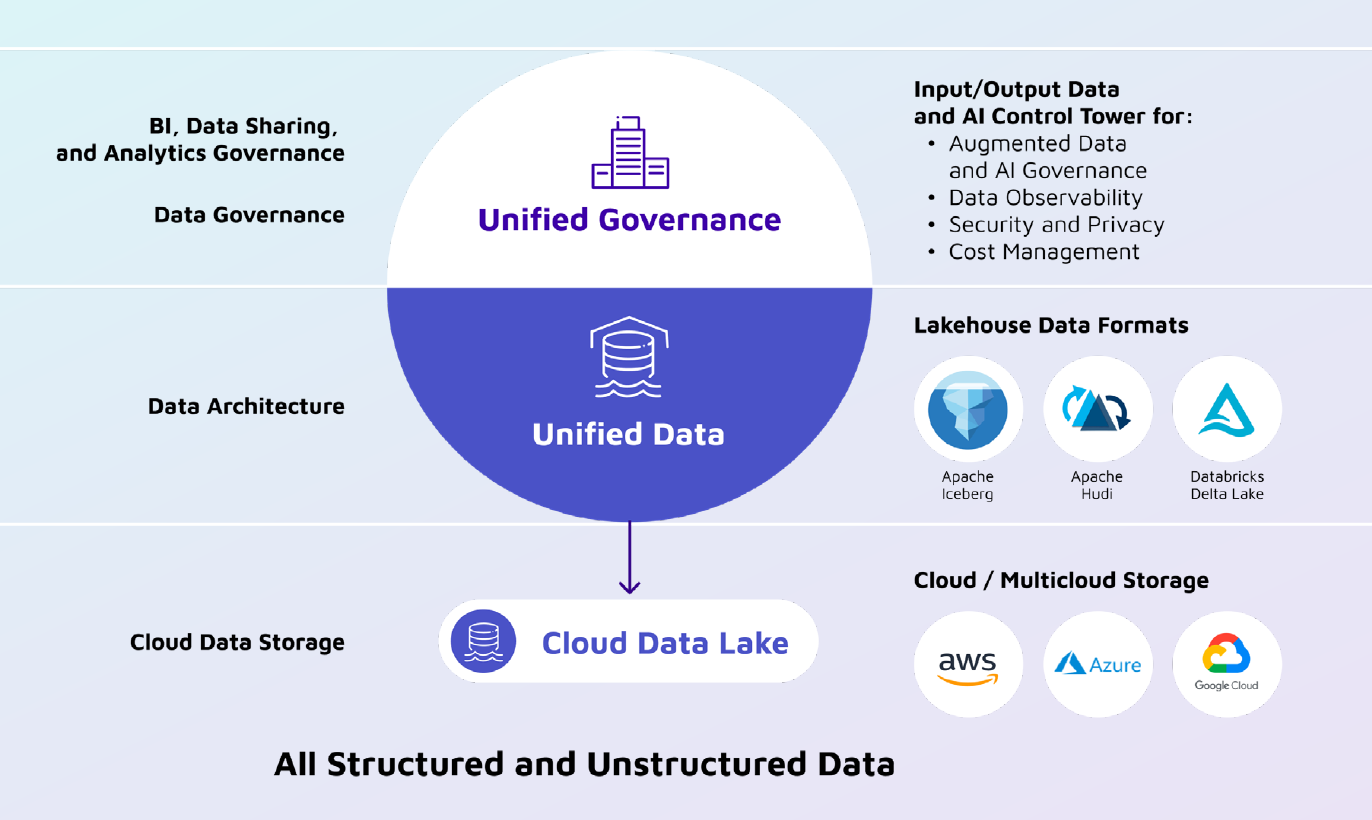C-suite executives are increasingly embracing artificial intelligence (AI) and machine learning, spurred by their enterprise’s need to digitally transform. However, there’s a notable gap between AI’s potential and real-world success, which reveals a fundamental problem in data management. Advances in data platforms, especially the data lakehouse, present solutions for navigating complex data ecosystems, but there are caveats.
In the executive roundtables that we held in September together with industry leaders across Europe, the US, and Asia Pacific, we dove into modern data platforms — the data lakehouse, in particular — brought about by the rising tides of AI and machine learning (ML). Indeed, global spending on AI-centric systems — software, hardware, and services — is projected to increase by US$154 billion in 2023. The investment is spurred by the clamor to digitally transform, augment human capabilities, automate processes and tasks, personalize recommendations, and make more data-driven decisions.
Despite this towering figure, there’s a widening chasm between AI’s promise and practicality. Organizations deploying three or more AI applications increased to 79% among surveyed leaders, but more enterprises also didn’t realize the ROI they were expecting. Almost half of AI implementations never move from pilot to production, with 40% of surveyed leaders struggling to demonstrate ROI from each AI model.
So, why the disconnect?
Moving forward with AI requires going back to basics: data. While algorithms and computing power are vital, proper data management, governance, and orchestration underpin AI’s successful operationalization. Fortunately, advancements in data platforms are enabling enterprises to grapple with increasingly complex data ecosystems — from data lakehouse and data fabric to data mesh. The data lakehouse, in particular, provides a compelling approach that combines the flexibility of data lakes and the performance of data warehouses.
A data lakehouse bridges the gap between storing large amounts of data and processing them in a structured, high-performance environment. It serves as a unified platform for storing, processing, analyzing data that, in turn, provides a solid foundation for managing AI models and implementing AI-driven projects.

A sample visualization of a data lakehouse
Modern data platforms are inherently different in design and implementation, but they share a common objective: Unify the diverse elements of the data ecosystem and create a harmonized approach for accessing and utilizing data. This involves bringing all data sources and tools under one coherent system, ensuring that they work and integrate well with each other, and establishing standards for interacting with this single source of truth.
The data lakehouse seems to increasingly resonate with enterprises. In 2022, for instance, 66% of surveyed IT and analytics leaders around the world said that their organization is already using a data lakehouse, while 84% of those who aren't are likely to do so over the next 12 to 24 months.
As a “control tower,” the data lakehouse enables access to high-quality data for AI/ML initiatives. In terms of costs, a data lakehouse provides cost-effectiveness in AI/ML deployments by serving as a unified platform where raw and processed data coexist. Download our white paper, “Lakehouse: The Control Tower for Bridging Data and AI,” to learn:
-
What leaders and decision-makers are doing to adopt and commercialize AI-powered innovations across their organization.
-
Difficulties in operationalizing AI and managing data, and the inherent challenges of traditional data platforms.
-
How a data lakehouse can shed light on the intricacies of modern data management.
-
A real-life case study of how a Fortune 500 company transitioned to a modern, hybrid data platform that streamlined their processes for using data and helped accelerate their AI/ML initiatives.
-
What enterprises need to do or consider before implementing a data lakehouse.





